BICYCLING THE
pacific coast
A Complete
Route Guide,
Canada to Mexico
FOURTH EDITION
Whether youd like to head out for a weekend tour or for weeks on end, this comprehensive guide will help you down the road.
Adventure Sports Journal
The latest fourth edition may be the one that introduces a new generation to the joys (and pains) of long-distance cycling... [A] no-holds-barred look at doing the mighty coast highway on two wheels.
Oregonian
This is a book to inspire dreams of rolling adventure.
San Francisco Chronicle
If youve ever dreamed of riding part or all of the Pacific Coast this is a great source of information.
The Cascadian
The whole book is peppered with new information, from updated mileage logs to additional attractions. In addition to planning our rest stops and camping based on the books suggestions, we had the pleasure of experiencing several scenic detours we otherwise would have missed.
Albany Democrat-Herald

BICYCLING THE
pacific coast
A Complete
Route Guide,
Canada to Mexico
FOURTH EDITION
VICKY SPRING AND
TOM KIRKENDALL


| THE MOUNTAINEERS BOOKS is the nonprofit publishing arm of The Mountaineers Club, an organization founded in 1906 and dedicated to the exploration, preservation, and enjoyment of outdoor and wilderness areas. |
1001 SW Klickitat Way, Suite 201, Seattle, WA 98134
2005 by Tom Kirkendall and Vicky Spring
First edition, 1984. Second edition, 1990. Third edition, 1998. Fourth edition: first printing 2005, second printing 2006, third printing 2007, fourth printing 2008, fifth printing 2010, sixth printing 2012
All rights reserved. No part of this book may be reproduced in any form, or by any electronic, mechanical, or other means, without permission in writing from the publisher.
Distributed in the United Kingdom by Cordee, www.cordee.co.uk
Manufactured in the United States of America
Editor: Christine Clifton-Thornton
Cover Design: Kristy Thompson
Layout: Marge Mueller, Gray Mouse Graphics
Cartographer: Tom Kirkendall
All photographs by the authors unless otherwise noted.
Cover photograph: Watching the sunset from Lime Kiln Point State Park
Frontispiece: A field of hairy checkermallow on Cascade Head overlooks the mouth of the Salmon River.
Library of Congress Cataloging-in-Publication Data
Kirkendall, Tom.
Bicycling the Pacific Coast : a complete route guide Canada to Mexico / Tom Kirkendall and Vicky Spring. 4th ed.
p. cm.
Includes bibliographical references and index.
ISBN 0-89886-954-4 (pbk.)
1. Bicycle touringPacific Coast (North America)Guidebooks. 2. Pacific Coast (North America)Guidebooks. I. Spring, Vicky, 1953- II. Title.
GV1046.P17K57 2004
917.90434dc22
2004027548
 Printed on recycled paper
Printed on recycled paper
ISBN (paperback): 978-0-89886-954-5
ISBN (ebook): 978-1-59485-207-7
CONTENTS
Inland Route
Peninsula Route
Combined Route


TABLE OF ESSENTIALS
The table on the following pages is designed to let you view all the basic information for each days ride at a quick glance. The Table of Essentials will help you see what amenities and activities are available along the ride. When considered with the Distance and Difficulty entries, you can quickly calculate how long it will take you to complete the ride and determine the amount of time you will want to spend enjoying the scenery and attractions along the way; or, the table may help you decide if you need to pick up a good book and spend an afternoon relaxing and reading on the beach.
The table is not designed to take the place of the Mileage Log. You will still need to refer to the Mileage Log section of each days ride for riding directions and distances.
How to Use the Table
Pick the correct tableBritish Columbia, Washington, Oregon, or Californiadepending on which state or province you are in. The days are listed in order and by the name of the starting and ending point, as found in the table of contents.
Distance: The miles listed follow the basic routes outlined in the Mileage Log. Any side trips or excursions will add extra miles to the total.
Difficulty: Each days journey has been rated as either easy (E), moderate (M), or difficult (D).
E | In order to receive an easy rating the roads must be in fairly good condition with adequate shoulders for most of the distance. Most easy rides are less than 60 miles in length. The terrain tends to be rider friendly without too many long hills. Traffic on easy rides must be either light or generally rider friendly. |
M | The moderate ride category covers everything that isnt obviously easy or truly difficult. On moderate rides you may encounter long hills, sections where the road is uncomfortably busy, and/or places where the shoulder is missing. |
D | When a days ride is rated as difficult, there generally are areas that are unpleasant to ride; San Francisco and Los Angeles both received this rating in recognition of the narrow, busy roads that you must ride in order to make it through these municipalities. Difficult rides may require constant reference to the directions as the route weaves and wanders through a maze of city streets. Dangerous sections of roads, such as found on sections of Highway 101 in Northern California, where four lanes of traffic are funneled into two lanes with no shoulder, are also reasons for classifying a days ride as difficult. |
Bike Shop: Bike shops are available in every large town along the coast. Unfortunately, you can be days away from these major bike shops when your hub suddenly decides to pop or your sealed pedal suddenly unseals itself. The list here is designed to give you an idea of where to start looking for a bike shop. It has been our experience, through several editions of this book, that bike shops come and go frequently in smaller towns. The bike shops that do survive tend to do so by multitasking and may not offer all the services of a large city shop. Your best bet for bike shops is always the big cities and college towns.
Beach Access: This category lets you know if you can plan on an hour or so of beach recreation time during the days ride.


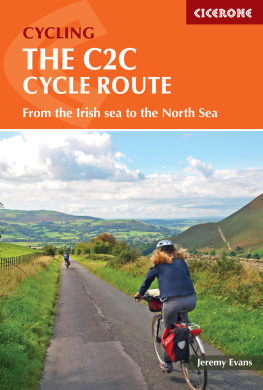
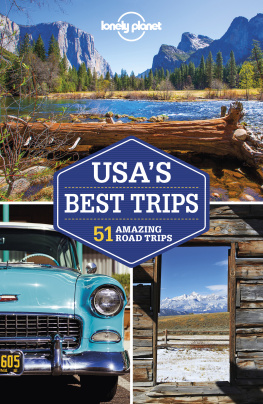


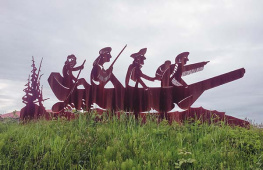
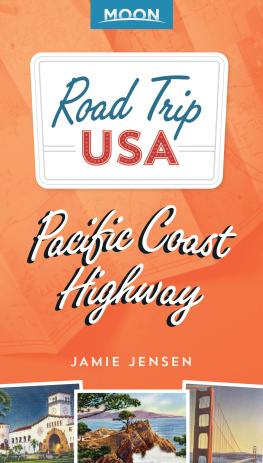
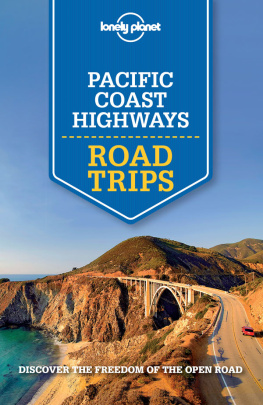



 Printed on recycled paper
Printed on recycled paper
